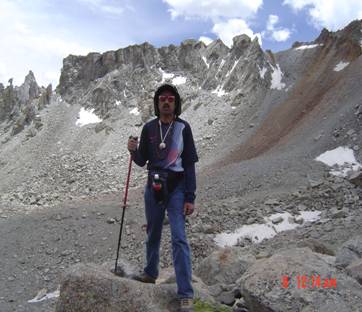
|
|
|
|
|
|
|
|
How to "Get in Shape"
It is recommended that you start a moderate training program 6-8 months before departure, and then slowly build up to a more strenuos level. The level of fitness needed for a trekking adventure requires regular aerobic exercise for at least one hour 4 -5 times a week. This may include aerobic fitness classes, running, cycling on hills, swimming and cross country skiing. Additionally, youmust be able to sustain exercise for prolonged periods - and for days in a row. Finally, you must have some experience with exercise at altitude. Here's a recommended program that should get you in good shape, but please remember it's only a guideline. You should always consult your physician before beginning any new fitness program: Week 1 through week 4: Start moderately and work out a minimum of four days per week. Strike a good balance between aerobic workout and muscle strengthening. Outdoors, you can run, hike, cross country ski or mountain bike on hilly terrrain to best achieve the aerobic fitness component. Indoors at a gym, you can use the stairmaster and treadmill wearing a backpack with some weight in it to substitute for the outdoor activities and take aerobic fitness classes. Work on muscle strenghening either by lifting weights or by doing pushups, sit-ups, and squats. It is very important include a long hike on the weekend, since there's no better way to train for a trek than ... to trek! Running: 3 to 5 miles in an adequate training run. Biking: 1 - 2 hour rides. Be sure to include some hills Hiking: 5 to 6 hour hikes. Be sure to include some hills Treadmill or Stairmaster: 50 - 60 minute sessions Week 5 and onward until departure: Increase your workouts to a minimum of five days per week. Remember, a trek can be the trip of a lifetime and you realy want to enjoy it, so take your training program seriously - it'll be worth it!. High Altitude Trekking Trekking in the Himalaya provides unmatched beauty with an experience of ultimate wilderness and personal achievement. To join a trek, no technical climbing or other special abilities are required, but you should be equipped wit a spirit of adventure, awiilingness to undergo the potential hardships of outdoor living and long days on the trail, and last but not least, understand what it means to exercise and spend time at high altitude. As you ascend in elevation, your body is exposed to less oxygen, which imposes considerable physiological stress on it. As a result, most people feel physical discomfort of shortness of breath, nausea, insonia, headaches, and exhaustion while trekking in high altitude. However, if your body is given the appropriate time to acclimatize to the thinner air, it's greatly improve your chances of doing well and decrease the level of discomfort you'll experience at high altitude. Once at altitude, elevation gains between camps are limited: you may climb higher during the day but descend to sleep, extra nights are spent at the same elevation after each 2000 - 3000 foot gain over 12,000 feet. The old climber's saying "climg high, sleep low" is still a most important piece of advice. Besides a proper acclimatization, the following is impotant in adjusting to high altitude and staying healthy during your trek: - Get in the best possible shape you can before the trip - Begin your trip in good health and obtain all the recommended immunizations for your trip - Drink lots of water - more than you feel you need to. - Eating is important. Diet should be high in carbohydrates and protein - Understand the concept of altitude acclimatization - Recognize - and never ignore - the symptoms of altitude illness - If you consider using Diamox ( a drug that can facilitate acclimatization and treat mile cases of moutain sickness) make sure to discuss its pros and cons in detail with your doctor and with your trip leader once you're on the trek. (Note: most people do not need to use this medication routinely at altitude if their trip allos adequate time for ascent) Useful Websites: www.traveldoctor.co.uk/altitude.html www.traveldoctor.co.uk.exposure.html www.mountaineering.ie/features/general/highaltitude.html www.high-altitude-medicine.com www.princeton.edu/~oa/safety/altitude.html Cleveland Clinic Journal of Medicine, vol 70, supplement 1 - April 2003 High Altitude Illness: The New England Journal of Medicine, vol 345:107-114, July 2001
Learn to be happy alone. If we do not enjoy our own company, why inflict it on others! - Swami Chinmayananda |


